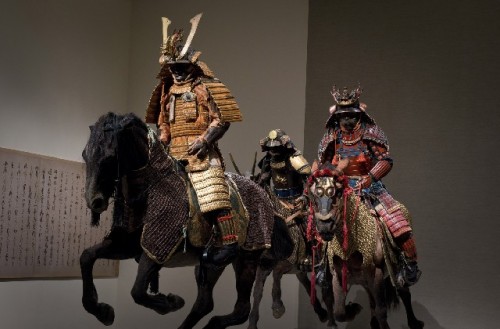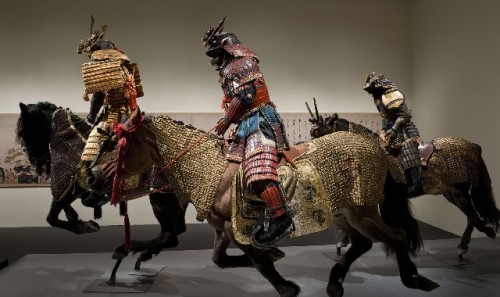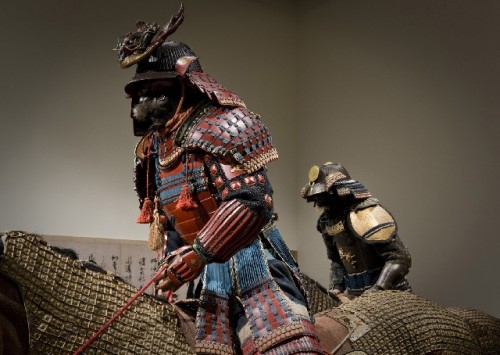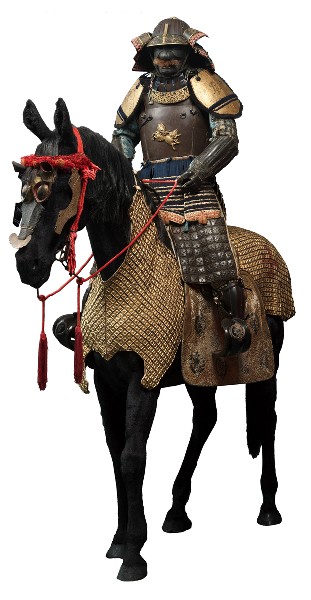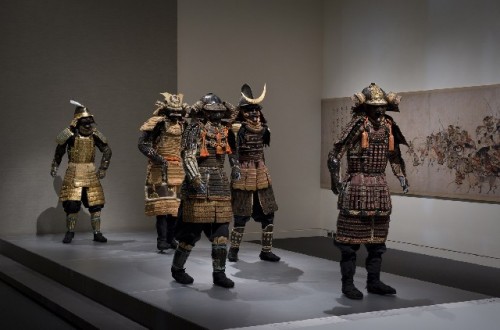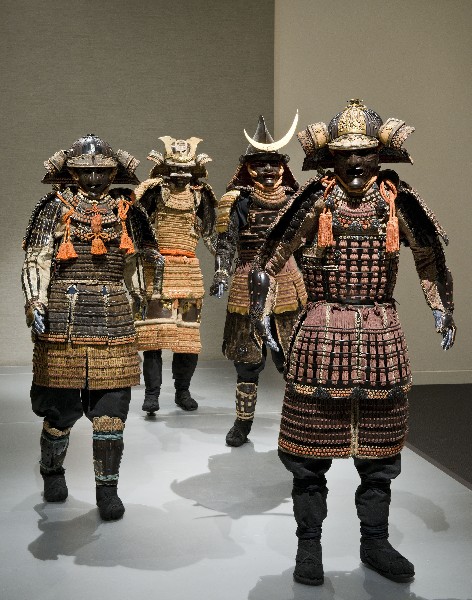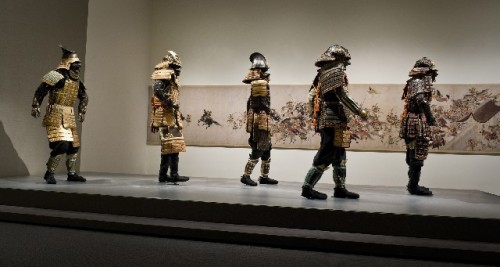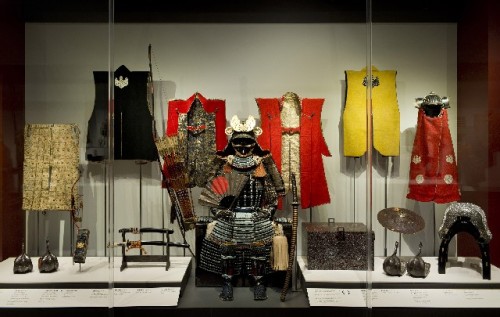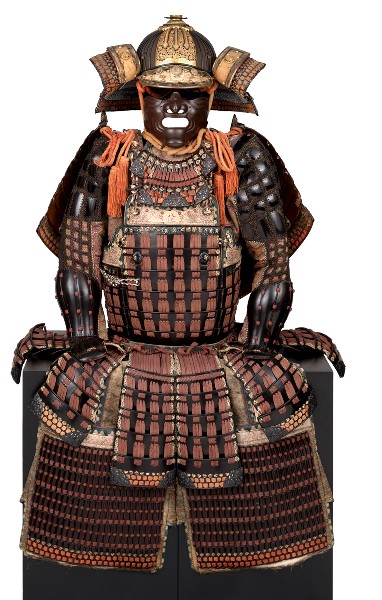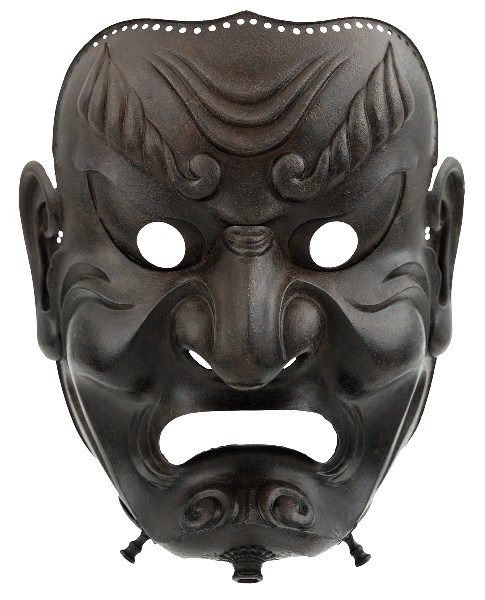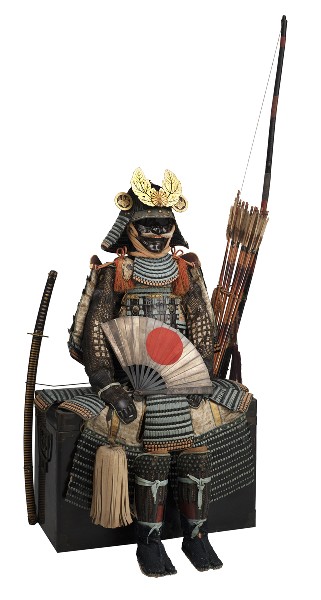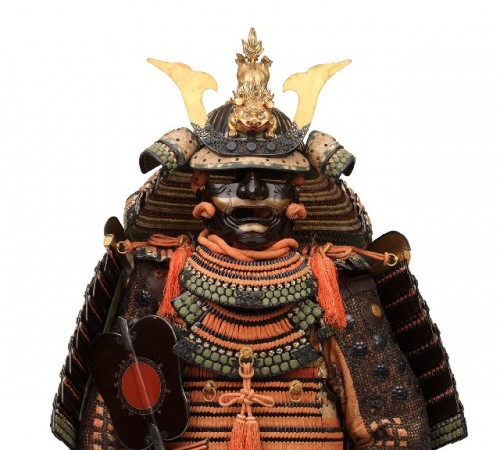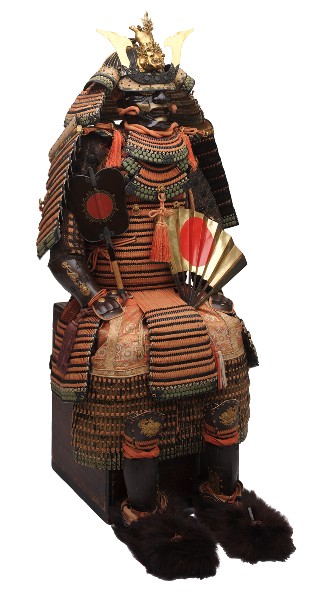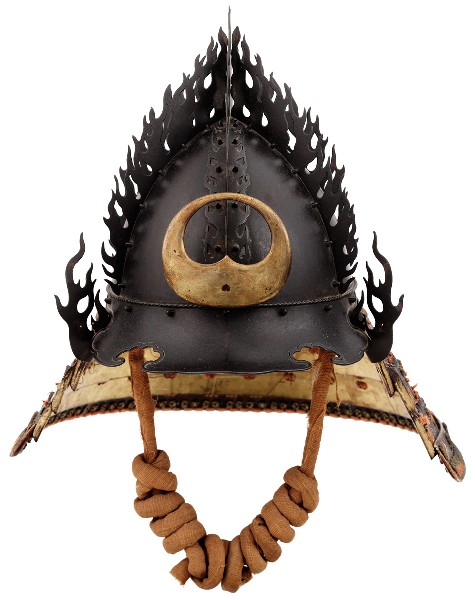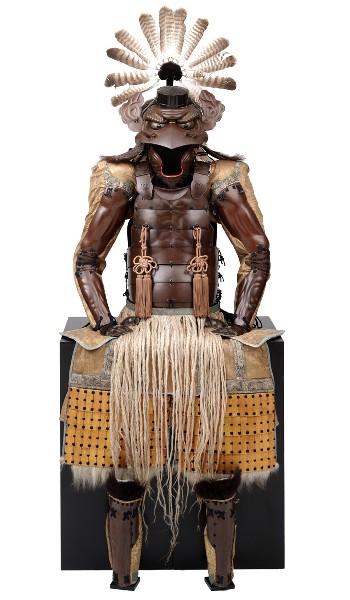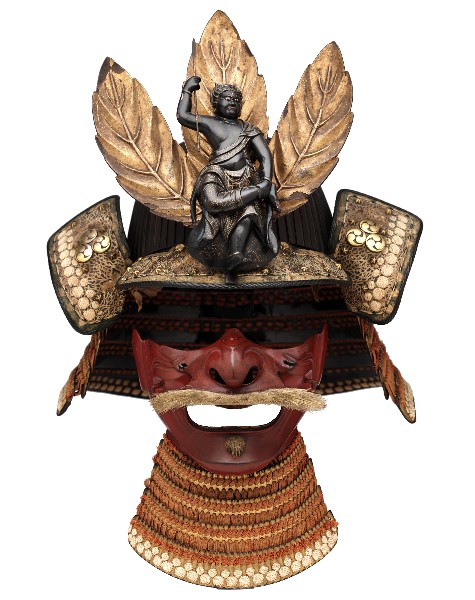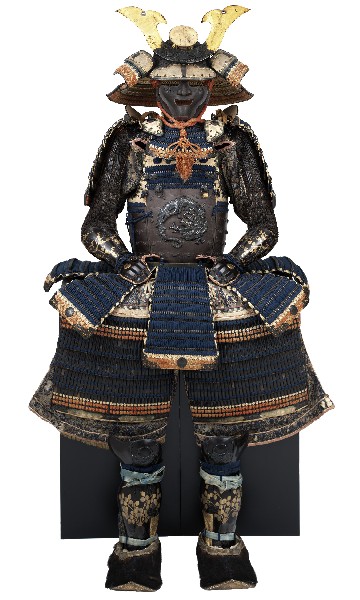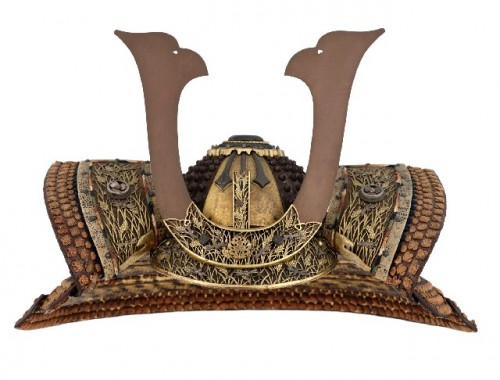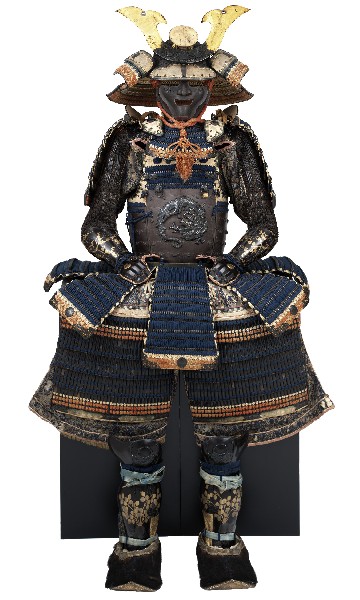Samurai at the Museum of Fine Arts
Bushido: The Way of the Warrior and the Art of War
By: Charles Giuliano - Jun 18, 2013
When I was a lad of nine or so, my uncle Bill, a professor at Queens College, took my sister and I for our first visit to the Museum of Fine Arts. There are home movies of the occasion with me dressed up complete with a felt hat.
It was an occasion of wonder.
That night my parents asked what I had found interesting.
The answer came with a gush of enthusiasm which has prevailed for a lifetime.
“Mummies and Samurai swords and armor” I exclaimed.
My first job after college was in the Egyptian Department of the MFA. I was installed as an intern in the basement to keep it tidy and restore Old Kingdom stone vessels.
After lunch I roamed the museum with frequent visits to the world’s greatest collection of Asian art. Often I asked the guard to open the closed temple room with its priceless Buddhist sculptures.
Many a time I flipped back the curtain from the long, narrow vitrine that housed one of Japan’s greatest national treasures.
Tthe current exhibition Samurai Armor from the Ann and Gabriel Barbier-Mueller ollection, through August 4, includes a blow up of "The Burning of Sanjo Palace" Heiji Monogatari Emaki, Kamakura period, 16.25in x 22ft 9in from the 13th Century. It depicts the primary battle of the 1159 Heiji Rebellion.
The MFA that I visited as a youth, frequently through high school, then worked for in my twenties is very different today.
From the early years I recall wooden floors that creaked and broke the silence in galleries that attracted few if any visitors. The guards were seemingly as ancient and immobile as the treasures they watched over.
During my years on staff the Asian galleries were a destination for peace and contemplation. There was an irony that galleries housing the museum’s most renowned collections received so little traffic and attention.
Not any more.
Japan has emerged as a major partner of the museum through tourism, and cultural exchanges. That started with the creation of the Nagoya branch of the MFA. Ironically, the Japanese curators were primarily interested in loans of French impressionism.
It has become routine for major museums to view their collections as a revenue source through loans for cash as well as quid pro quo bargaining chips for blockbuster exhibitions.
Back in the day the MFA averaged about 500,000 visitors. That changed with its first Renoir show. It marked a shift from the museum as cultural resource to a business with full scale marketing, amenities including dining and shopping, and a barrage of media.
Sebastian Smee in the Globe, reports on what’s missing from the Samurai show.
While praising the spectacular armor, masks, swords and warriors on ersatz horses he comments “If there is one pity about the MFA show, it is a question not of content, nor even of design, but of taste. In one of the large galleries, a long wall is adorned with a considerably enlarged reproduction of one of the MFA’s most famous works: ‘Night Attack on the Sanjo Palace,’ a 25-foot-long scroll painting from the larger series known as the ‘Illustrated Scrolls of the Events of the Heiji Era.’
“The enlarged reproduction of this thrilling, 13th-century work looks good enough as a backdrop, and with its wave of armor-clad soldiers mounting a bold attack on a burning palace, it is certainly relevant to the subject at hand. But why can’t we see the actual work, since it belongs to the MFA?
“That’s easy: It is touring Japan in a show that has drawn over a million people — a show that, for reasons less than unconvincing, we will not have the privilege of seeing in Boston.
“It is galling, in these circumstances, to have to make do with a reproduction — an enlarged, blurry reproduction at that.”
Agreed. Excellent point.
It would be interesting to know more about why that show which is doing so well in Japan is not being planned for a triumphant return to its host museum.
That’s a complex question.
Perhaps the current show of Samurai paraphernalia is more capable of arousing interest than Japanese painting which is beyond the scope of an American audience. Even today the superb Asian galleries are less trafficked than the mobbed ones displaying French painting.
My own interest in all things Samurai started as a lad and accelerated through the oeuvre of the director Akira Kurosawa and a host of later filmmakers. In addition to Samurai films we have seen countless others focused on all aspects of the culture from ancient through contemporary.
For those of my generation it was difficult to understand Japanese culture while growing up in the Post War era and dealing with the controversy surrounding the attack on Pearl Harbor, suicide Kamikaze pilots, and then American nuclear bombs dropped on Hiroshima and Nagasaki. How to deal with the barbarism of the 1937 Nanking massacre or the death march from Bataan?
John Toland’s two volume, 1957 book “The Rising Sun: The Decline and Fall of the Japanese Empire, 1936-1945” was unique in presenting that history from both Japanese and American perspectives. It is essential to understand the ancient philosophy of bushido “the way of the warrior” and a tradition of the samurai with their shoguns and daimyo or clan heads. The power and authority of the Shogun, on a par with the Emperor, started in 792 AD and ended with the Meiji Restoration of 1868.
The bushido tradition entailed honesty, courage, honor, loyalty and acceptance of death in battle with no option for surrender. Through orders of a superior, or inability to conform to the samurai code, a warrior was mandated to commit ritual suicide.
A samurai who surrenders is without honor and does not deserve being treated as a human being. It is a concept beyond our Western comprehension.
A visit to this stunning exhibition reveals that for the samurai war is a form of art.
The swords, for example, were crafted by masters and often passed down for generations in families. Some of the Kamikaze pilots, who came from samurai families, took their heirloom swords with them during suicide missions.
A number of Japanese films focus on the hard times during the peace of the Edo period 1615-1868 when most samurai were unemployed. Tradition prevented them from any other form of work. The plots of those films often focus on their desperation. It was an era when the samurai was often a “freelancer” as we learned in Kurosawa’s masterpiece “The Seven Samurai.”
This riveting exhibition reveals the accoutrements of these warriors from their weapons to armor.
It explores the art and artifacts of a now abandoned tradition. Today Japan’s warriors are master negotiators in the complex rituals of commerce.
This exhibition is both horrific in its focus on war and combat as well as hauntingly poetic and beautiful. It is a rare and evocative experience.

